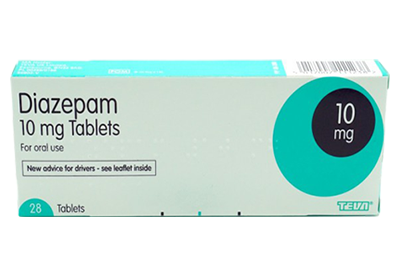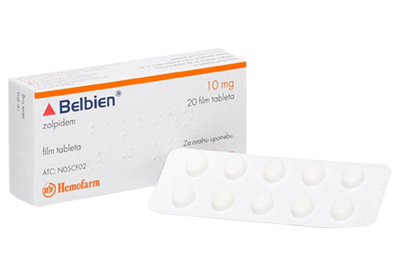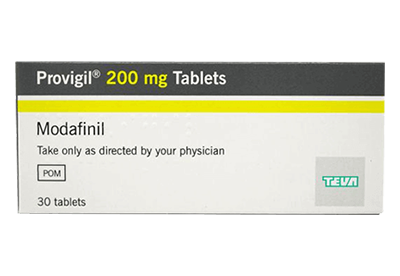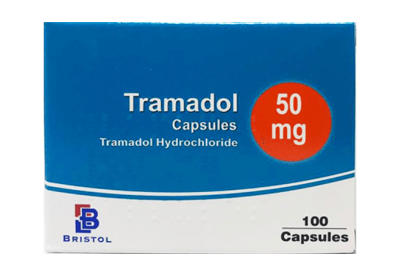
Diazepam
Anxiety is a common human emotion. It can be described as a feeling of nervousness often felt in stressful situations like public speaking or taking an important exam. Some people, however, feel this all the time. Others may experience unwarranted episodes of extreme panic, even though there is no danger present.
£5.97 £3.77
Go to PharmacyAn estimated 359 million people, around 4.4% of the global population, are currently suffering from anxiety disorders according to the World Health Organization (WHO). This number has only been rising in recent years, with the current number of individuals with these conditions having increased 50% since the year 1990.
Diazepam is a potent pharmaceutical treatment for a variety of conditions, including panic attacks and anxiety disorders. It may also be used to treat seizures, restless leg syndrome, alcohol withdrawal, muscle spasms and insomnia. This drug has helped millions of patients find short-term relief.
What is Diazepam?
Diazepam 10 mg is a popular medication often found under its brand name, Valium. It's approved by the Food and Drug Administration (FDA) for use on anxiety disorders and is listed on the WHO Model List of Essential Medications. It is also approved to treat seizures and various skeletal muscular conditions. The medicine comes in several forms, including tablets, liquid, rectal tube, and injection.
Diazepam comes from a family of drugs known as benzodiazepines. They relax the central nervous system(CNS) by blocking abnormal excitatory signals in the body, allowing the user to feel a sense of calm.
Anxiety disorders can arise for a variety of reasons, including genetics, physical health issues, certain medications, substance use, and trauma. Diazepam is a temporary treatment often recommended by doctors when patients have exhausted all other non-pharmaceutical methods such as therapy, breathing exercises, and healthy lifestyle changes.
Benzodiazepines
Benzodiazepines, sometimes referred to as benzos, are depressants used to treat conditions like anxiety disorders, muscle spasms and seizures. Some are also occasionally recommended for insomnia as well, especially when it's caused by excessive stress.
Benzodiazepines like diazepam bind to GABA-A in receptors present in the brain and central nervous system. These are protein pores in the cell membrane that passively move chloride ions. By binding to these central chloride channels, they open more frequently, allowing negatively charged ions to enter the neuron and inhibit excitability. This process is more simply referred to as hyperpolarization, and it's responsible for reduced brain activity.
By boosting the effect of GABA, the body's calming chemical, in this way, users will experience feelings of calm, relaxation, and sleepiness, making benzodiazepines like diazepam the ideal treatment for anxiety and other conditions caused by over activity in the nervous system.
Clinical Uses
Anxiety and Panic Disorders
Diazepam is often recommended by doctors as a short-term treatment for patients displaying the symptoms of panic or anxiety disorders. Its sedative properties help patients find relief from feelings of unwarranted fear and restlessness and the accompanying physical symptoms. diazepam works fast, making it ideal for acute situations like panic attacks or extreme agitation. As a result, users are able to quickly regain control over their mental faculties.
Seizures
Diazepam has long been used to manage seizures. In the event of an emergency, it can be injected or administered rectally to quickly stop the event. It can also be taken in tablet form as a part of a long-term plan to prevent seizures.
Muscle Spasms
Aside from its use as a psychiatric medication, diazepam is often utilised for physical rehabilitation as well. As a muscle relaxant, this medicine can help patients find relief from muscle spasms caused by neurological conditions like inflammation, multiple sclerosis, and spinal cord injuries.
Benzodiazepine Comparison Chart
| Drug | Onset of Action | Duration | Common Uses | Notes |
|---|---|---|---|---|
| Diazepam | 60 mins | 4 - 6 hrs | Anxiety disorders, insomnia, Seizures, muscle spasms, alcohol withdrawal | Long half-life, lower overall risk profile, can cause feelings of euphoria |
| Alprazolam | 30-60 mins | 4 - 6 hrs | Anxiety disorder, PTSD, GAD, panic attacks, alcohol withdrawal, seizures | May cause disinhibition and euphoria |
| Lorazepam | 20-30 mins | 6 – 8 hrs | Anxiety disorders, anxiety induced insomnia, pre-procedure sedation | Fast acting, preferred in elderly, less risk of rebound insomnia and withdrawal |
The chart above displays diazepam's advantage in providing prolonged relief for a number of conditions. Each drug has its own strengths. Lorazepam is a better choice for elderly patients because there is less risk of the medication building up in their system over time. Those looking for faster relief may prefer alprazolam, despite its higher risk of dependence.
While diazepam provides lasting protection, alprazolam's fast action makes it a preferred treatment for short-term stress and panic attacks.
Dosage and Administration
It's highly recommended that patients seek professional advice from a doctor before proceeding to take diazepam. A healthcare provider who is well-versed in the patient's up-to-date medical records will be capable of identifying whether or not it's advisable. They may want to adjust the dosage or offer a better alternative for their situation.
This medication is available in a range of oral pill strengths, ranging from 2 mg to 10 mg. Diazepam 10 mg is reserved for the most severe cases. Depending on professional recommendation, it may be taken two to 4 times a day. Patients may be advised to start at a higher dose and taper down when treating alcohol withdrawal or muscle spasm. Rectal, injectable or nasal medication is used when needed in the event of a seizure because of its almost instant onset.
Oral diazepam tablets can be taken with or without food. Ensure the pill is swallowed whole. Do not attempt to break or crush.
Safety and Potential Side Effects
When used responsibly under professional recommendation, this medication has an excellent safety record. Oral diazepam has been approved by the Food and Drug Administration (FDA) since 1963. In some countries, this medication quickly gained popularity by the end of the decade, and continues to be relied upon to treat various conditions like anxiety, to this day.
Diazepam, like all drugs, carries a small risk of side effects, the most common of which include:
- Fatigue
- Dizziness
- Drowsiness
- Muscle weakness
- Impaired coordination
Safe, responsible use of diazepam is important. Patients should not use this medication alongside opioids, alcohol, or other sedative drugs. Doing so could cause a dangerous reaction called severe respiratory depression. The elderly and those with liver or kidney conditions will likely be recommended a lower dose by their doctor, as these issues may affect how the medication is broken down and absorbed in the body.
Risks, Dependence and Precautions
While diazepam is generally well tolerated by healthy patients above the age of 18, younger or elderly patients will likely be recommended a lower strength. The same is true if the patients suffer from conditions like liver or kidney impairment. Diazepam may not be suitable for users with sleep apnoea, depression, a history of drug abuse, myasthenia gravis, arteriosclerosis, or a diagnosed personality disorder.
Patients should closely follow the instructions outlined by their health care provider. Do not exceed the recommended dose as it raises the risk of unwanted side effects or overdose. If the user forgets to take their diazepam after regular use, they should take it as soon as they remember, unless it's almost time for the next dose, in which case they should skip the forgotten pill and take the next one at its usual time.
Do not take diazepam for more than 4 weeks unless it is recommended by a doctor. If the drug has been taken regularly for a longer period of time, do not stop suddenly as it could trigger withdrawal. Users should instead taper off the drugs slowly to avoid the symptoms from occurring.
Price of Diazepam
The exact cost of diazepam may vary from pharmacy to pharmacy. Customers may also incur additional costs such as shipping and handling. The dose strength and number of pills in a pack will also affect the price. Patients may find online pharmacies provide a more affordable alternative to expensive brick-and-mortar shops. This is due to the cost of upkeep for a digital storefront is much cheaper than traditional shops and chemists.
Diazepam is available in 2mg, 5mg, and 10mg tablets. Health care providers will often recommend lower doses for milder symptoms in order to minimise the chance of side effects. Here's a look at typical UK price ranges for diazepam 10 mg:
| Pack Size (Tablets) | Strength | Price Range (GBP) |
|---|---|---|
| 30 | 10mg | £39 - £44 |
| 90 | 10mg | £84 - £89 |
| 120 | 10mg | £107 - £112 |
Frequently Asked Questions
What is the drug diazepam?
This medication is a sedative benzodiazepine that treats a range of excitatory issues, including anxiety and panic disorders. It's also used to manage seizures, muscle spasms and alcohol withdrawal. Diazepam typically comes in pill form and is on the WHO list of essential medications.
Is 5mg diazepam strong?
5mg of diazepam is an average dose and will suit most healthy adult users. New users should consult their health care provider and follow their dosing instructions closely to prevent side effects, tolerance or overdose.
Diazepam 10 mg is the strongest dose available and usually recommended to patients with the most severe symptoms. The lowest dose, 2mg, may be suggested to patients who are above the age of 65 or suffer from kidney/liver impairment.
How long does diazepam take to work?
When diazepam 10 mg is administered orally via tablet, this medication takes 30 minutes to an hour to begin working, and lasts for up to 24 hours. Hospitals may utilise a nasal spray or injection in cases of emergency. These methods work almost instantly but are typically reserved for dangerous seizures or panic attacks.
What are the normal side effects?
The most commonly seen side effects of diazepam include dizziness, drowsiness, fatigue, muscle weakness, and impaired coordination. To avoid adverse effects as much as possible, following a professional's medical guidance is the key. Avoid taking the medication alongside alcohol, opioids, cannabis, or other sedatives as these drugs can lead to breathing problems.
Is dependence possible?
Patients who are taking diazepam for less than four weeks are unlikely to form a dependence on the drug. Those taking the medication for longer may experience the need to increase their dose to obtain the same feelings of calm. They may also have a strong urge to continue taking the drug and feel as if they are unable to cope with their stress without it. These are all signs of dependency patients should look out for.
Are withdrawal symptoms possible and how can I manage them?
Patients going through diazepam withdrawal may experience unusually vivid dreams, nightmares, or other sleep disturbances. They may also have mood swings and irritability, along with fatigue or restlessness. To avoid withdrawal, it's important that users taper off the drug at the end of treatment. They can do this by reducing the diazepam dosage until it is no longer required.


